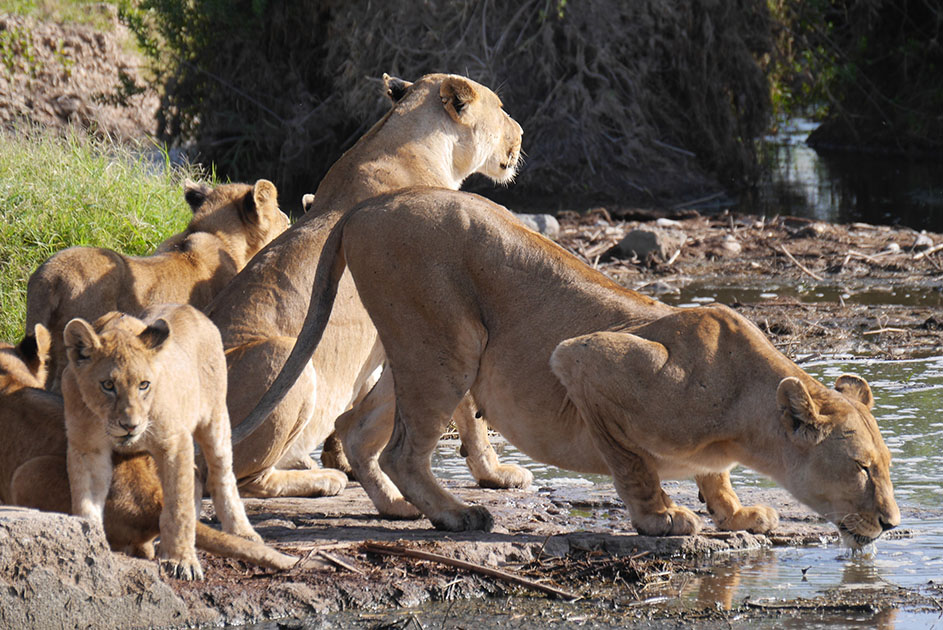Ngorongoro Conservation Area
Ngorongoro is a world class tourist destination. The area was established in 1959 as a multiple land use area with wildlife coexisting with semi nomadic Maasai pastoralists practicing traditional livestock grazing. NCAA also contains the spectacular Ngorongoro Crater (250km2), which is the world largest unbroken caldera in the eastern (Great) Rift valley. There is a large population of large ungulates in the crater including the only visible of black Rhinoceros in their natural environment. The NCA is the only place where you are likely to see the big five.
People of Ngorongoro
Culture and people of Ngorongoro from one of the important attractions that tourists, Anthropologists and Archeologist do not dare to miss when visiting Ngorongoro. The Maasai have inhabited NCA for about 200 years after forcing out the Datoga. Since then the Maasai occupied the area and are living with in the environment and wildlife in Hamony. Due to their unique culture and customs they are among the best known African ethnics group.
DATOGA
The Datoga (Barbaig) are one of the Nilo Hamitic speaking pastoralists who visited NCA earlier than the Maasai 300 years before they were forced out by the Maasai. Is one of the strongest culture and unspoiled Datoga are well known in metal work. A visit to Datoga culture have a chance to witness the metal workers and opportunity to get beautiful jewelry.
HADZABE.
Believed to be the first inhabitants of the NCA but where forced to move southwards of the shores of lake Eyasi and they still in hunter and gatherer lifestyle and they speak language with clicking sounds in it. Hadzabe and Datoga live just outside NCA, in the lake Eyasi basin in and beyond. Hadzabe and Datoga are still practicing butter trade where the Datoga are blacksmith where they provide spears to Hadzabe for hunting and while Hadzabe provide honey and meat as source of food to Datoga
Serengeti National Park
The Serengeti its name comes from the Maasai Siringet meaning “endless plains” The Serengeti’s 14763 square kilometres equal in size to Connecticut or Northern Ireland. Serengeti is the Tanzania first National Park , Serengeti has been declared a World Heritage site in recognition of its uniqueness as the last strong hold of the great Migration. Contain an estimated three million large mammals, most of which take part in a seasonal migration that is unparalleled in nature. The Park is made up of different vegetation zones.
In the dry south the park is the short and long grass plains, in the center lies the acacia savannah, the western corridor the region of wooded highlands and pans of black cotton soil to the north is the wooded grassland concentrated in the watercourses.
Arusha National Park
It is habitat for a wide variety of mammals including bushbuck, giraffe, elephants, monkeys, duikers, baboon, buffalo, water buck and hippo. The bird life is spectacular with over 450 species recorded. The game viewing track that winds around the momela lakes is a great way to get close to and watch lesser and greater flamingo. Arusha National Park is probably the best place in Tanzania to watch black and white colobus and also to listen their loud and guttural territorial calls echoing through the forests. Also Arusha National Park is the best Place to do walking and while on walking you can enjoy game viewing e.g. birds, Natural forest, and waterfalls. Canoeing is possible for prior arrangement at small Momela lake and while on canoeing you can see waterbuck, cape buffalo, giraffe, bushbuck, water birds and hippos are often seen.
Its one of the small National Park which can be found in Northern Tanzania and popular destination for day trip visitors who are about to embark from the town of Arusha on longer Northern Circuit safaris. It’s the closest National wildlife park to the city of Arusha (29km) as well as Kilimanjaro International Airport.
Its one of the most beautiful topographically with unique game viewing in Tanzania. The parks includes the slopes, summit and ash cone of mt. Meru, the Momela lakes Ngurdoto crater, and the lush highland forests that blanket its lower slopes. Game viewing around Momela lakes is at a laid-back and quit peace and while passing through the forest many visitors stop to search for the troops of rare Black and White colobus monkey playing in the canopy.






